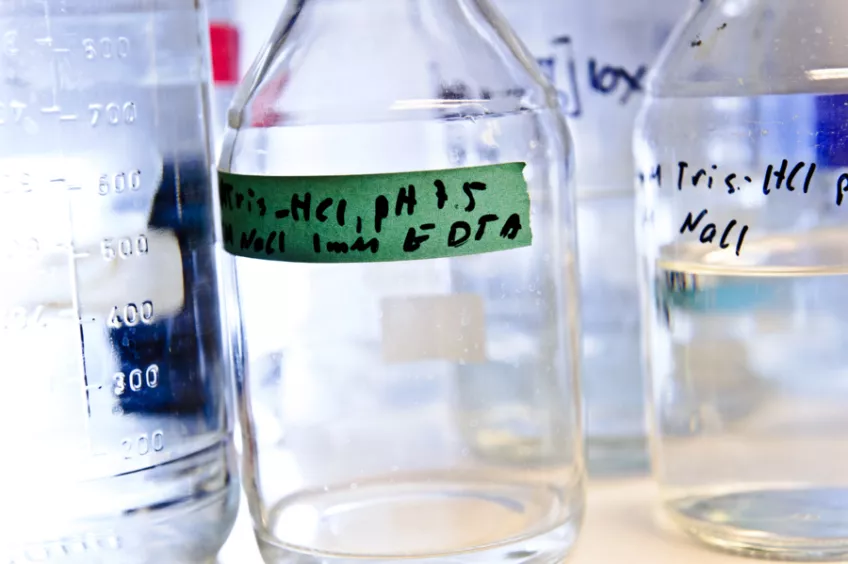Environment and health
Research on environment and health looks at, for example, how the general environment in and around the houses where we live, to how the presence of toxic metals and endocrine disruptors in our food affects health and well-being.
It is particularly important to study effects within the groups that are the most vulnerable, whether because of high exposure, a pronounced sensitivity to the exposure, or congenital or aggravated individual differences in the way our bodies react. It is not only of importance to study the risk factors in the environment, but we also need increased knowledge about the factors that improves our health.
About environment and health
The prerequisites of good environmental health strongly vary between different groups in the poulation. This aspect, environmental equity, is stressed internationally, but also in Sweden by, for example, the ”Malmökommisionen” on the social determinants of health, such as extremely overcrowded living conditions and exposure to air pollution.
There is a strong inter-sectoral aspect to these questions, and a striving to take them into consideration is included internationally in the general policy ”Health in all”. In Sweden, there is an obvious need to more explicitly link environmental issuses, public health issues and physical planning in ordere to avoid goal conflicts.
The research is carried out by using, for example, enquiries, national health registers, and biobanks covering large parts of the population, but also through field studies of groups chosen due to a specific type of exposure or special vulnerability to environmental toxins.
Air pollution
Effects of exposure to air pollution in the outdoor environment, especially from road traffic, are studied in epidemiological and experimental studies (chamber experiments). Studies of how the pollution can be meassured in the environment and how they are deposited in the respiratory system are also carried out. Our every-day life also generates exposure to air pollution indoors.
Research at Lund University is on:
- Asthma
- COPD (cronic obstructive pulmonary disease)
- Heart attack
- Stroke
- Effects on pregnancies and fetuses
- Characterization and effects of new ”green” fuels
- Exposure to air pollution from cooking, detergents and moisture damaged buildings
Loud noise
Exposure to loud noise from traffic is a common nuisance and the problem is central in the societal physical planning debate.
Research at Lund University deals with:
- Effects on the cardiovascular system
- Disturbances of every-day activities
- Differences in disturbance between various modes of transport
- Effects of so called silent sides
Toxic metals
There is widespread exposure to low levels of toxic metals in the population. Refined environmental chemical and epidemiological analytical techniques have made it possible both to discern exposure and effects even at very low levels, and to find the most vulnerable groups.
Research at Lund University deals with:
- Risk of osteoporosis in women exposed to cadmium
- Influence of lead exposure on fetuses and children
Persistant environmental toxins
Long-lived environmental toxins, which often accumulate in living organisms causing endocrine disruptions, have health effects even at low levels. Some of these toxins are forbidden and their levels are decreasing, but others are being added to the environment (among others flame retardants).
Research at Lund University deals with:
- Effects on fertility and pregnancy
- Effects on chldern’s development
- Risk of endocrine disease (e.g. diabetes)
Pesticides
Exposure to high concentrations pesticides gives rise to several negative health effects, while the effects of low-concentration exposure is unclear.
Research at Lund University deals with:
- Monitoring of exposure to various pesticides
- Health effects of exposure to pesticides
Green environments
There are many indications that green areas in close vicinity to residential areas have positive effects on health. The positive effects mainly come from strengthened recovery after stress and fascilitation of daily physical activity.
Research at Lund University deals with:
- How green environments affect health
- Epidemiological studies of the health effects of green environments
- Experimental (Virtual Reality) studies of the health effects of green environments
Genetic environmental medicine
The aim is to identify how the environment may cause damage to the genetic code, which in turn may give rise to cancer and effects on reproduction. Another part of this work is to identify persons who are particularly vulnerable for development of environmental disease because of their genetic background.
Spatial epidemiology
With the help of modern epidemiological methods and the use of geographical information systems (GIS), the distribution of ill health and its determinants can be mapped in detail in space and time. Advanced modelling of exposure is combined with individual data from registers and public health enquires. These methods are used in studies of, for example, health effects of traffic, green environment, and commuting.
Contact information and links
Related institutions and research centres at Lund University:
Occupational and Environmental Medicine
METALUND, Centre for Medicine and Technology for Working Life and Society

E-Health
ehealth.lth.se

LU Food
food.lu.se

Main page about research at Lund University
lunduniversity.lu.se




